
We are celebrating 15 years — and counting — of stories that are deeply researched and deeply felt, that build a historical record of what the city has been.
We are celebrating 15 years — and counting — of stories that are deeply researched and deeply felt, that build a historical record of what the city has been.
In 2018, architect Julie Chou, urban planner Kevin Gurley, and urban data analyst Boyeong Hong embarked on a mission to catalog all of New York City’s public restrooms: 1100, and not nearly enough. Shortly after we shared their work here on Urban Omnibus, the Covid-19 pandemic further impoverished New York City’s public toilet supply. When vulnerable New Yorkers needed them more than ever, many once reliable sites locked their doors, and many have yet to reopen.
Bathrooms have become scarcer, but public interest in this most private space has grown dramatically. Beloved comedic chronicler of New York City street life, John Wilson, pondered New York City’s bathroom problem in the third season premiere of his HBO show. Bathroom review influencers have launched TikTok series, authored op-eds in the New York Times, and are even partnering with elected officials to advocate for expanding public facilities. City Council members have taken note of this activist groundswell, sponsoring and passing multiple bills designed to increase the supply of available restrooms. The most ambitious legislation calls for an additional 3,300 bathrooms across the city, ensuring that if you need to go, there is a clean, safe, and public bathroom nearby, no matter what neighborhood you are in. Such an effort would quadruple New York City’s count, but making good on these promises will not be a simple task. Identifying appropriate locations to site new public bathrooms has been notoriously challenging, and facilities can draw the ire of neighbors concerned about noise, drug use, and the presence of unhoused people. Over the past five years, Chou, Gurley, and Hong have been working alongside some of the city’s community boards to find solutions that address different neighborhoods’ conditions and capacities. Below, they bring their deep expertise to bear and map out a path for the City to meet the moment. A citywide network will require a pragmatic approach, ensuring that private entities give back some of what they have taken from the public realm. But it can ultimately build a bathroom infrastructure that serves well beyond basic needs.
For the past five years, we have been studying New York City’s public bathrooms, with the goal of making our public realm more accessible and inclusive. Our study came out of work with the Urban Design Forum about New York City’s unhoused population, and many saw this as a marginal issue. But public spaces are not fully accessible without public bathrooms. For some seniors, parents and childcare workers with children, pregnant or menstruating women, people with gastrointestinal issues, and many others, venturing outside can be a challenge that requires careful planning to make sure a bathroom can be found.
The city needs a robust public bathroom infrastructure for residents to thrive. But in the earliest days of the Covid pandemic, people lost access to many of the city’s existing public bathrooms. Retail stores shut down. The Metropolitan Transit Authority (MTA) closed its 78 subway station bathrooms and has yet to reopen all of them. All 216 public library locations shuttered during Covid’s peak. With a chronic bathroom shortage made worse by pandemic restrictions, many New Yorkers relied on the 668 bathrooms in parks, a sizable amount of which were reported unacceptable and unsafe in 2019.
Since the onset of the pandemic, New York City relies more heavily than ever on delivery workers, who labor under dire conditions. Advocates and elected officials passed Local Law 117 to provide app-based food delivery workers access to restaurant bathrooms when they pick up orders. But this legislation does not protect workers who deliver packages and groceries, street vendors, or taxi and rideshare drivers, who also need access to bathrooms on the job.
The rise of hybrid work has also reduced foot traffic in central business districts. New York City and State are calling to reimagine their public realm to facilitate 24/7 live-work-play destinations. But this effort cannot be limited to affluent neighborhoods. Investment in public open spaces in the neighborhoods disproportionately affected by the pandemic is more critical than ever. Without public bathrooms, the people who most need access are shut out of the open spaces that proved so essential in the pandemic for mental health and wellbeing.
From our initial research, we extended our advocacy for public bathrooms to work with the city’s community boards. (One of us, Julie Chou, is a member of Manhattan Community Board 5 (CB5) in Midtown.) The public bathroom working group (PBWG) was formed in 2022 with community board members from Manhattan CB1, CB4, CB5, CB6, and CB7, and has met with elected officials, Business Improvement Districts (BIDs), advocates, bathroom vendors, and public health researchers. From these conversations, PBWG has begun to advocate for proposals that leverage public-private partnerships to open up the city’s existing bathrooms to the public. As private entities gain expanded development rights in the public realm, one of PBWG’s primary goals is to require them to create and share bathroom access with everyone.
The issue has finally gained traction in City Council, where six public bathroom bills have been introduced since the beginning of 2021. The most ambitious, sponsored by Councilmember Sandy Nurse, seeks to create a dynamic public bathroom system. Intro 1154 would mandate the city to include public bathrooms in strategic planning, and calls for the city to provide and maintain a ratio of one public bathroom for every 2,000 residents by January 1st, 2035. Based on 2020 census data, the city has a current ratio of one bathroom for every 8,000 people. To get to that 1:2,000 ratio, the city will need to provide public access to an additional 3,300 bathrooms on top of its existing 1,100 public toilets in the next twelve years.
The 1:2,000 ratio would make New York City a global leader in public bathrooms. (It is currently ranked 93rd among the 100 largest cities in the United States.) Internationally, London has an estimated ratio of 1:5,840, including bathrooms in municipal buildings, shopping malls, hospitals, and retail bathrooms. (Iceland is reported to have the highest density of public bathrooms — 1:1,785. But with a population of 372,000 this amounts to just 208 toilets.)
Getting to 4,400 bathrooms is not just a numbers game. We should also strive for an equitable distribution of public bathrooms. New York City is the most populous city in the US; we also attract the highest number of annual tourists. The allocation of public restrooms must take into account residents and commuters, workers and tourists.
Density and the distance between bathrooms are both important to consider. New York City’s 1,700 parks, playgrounds, and recreation facilities are distributed with the goal that every resident is within walking distance of a Parks location. Public bathrooms should be distributed with a similar strategy, so that residents can be out and about without worrying about finding a bathroom when they need it.
A bathroom system must be safe, clean, attractive, cost-effective, and efficient. Given the diversity of our neighborhoods and the unique needs and constraints of different users, a one-size-fits-all solution will not suit our city. Some neighborhoods have more seniors and families with children who rely heavily on publicly accessible bathrooms. Some neighborhoods predominantly have small retailers without bathroom access. Others grapple with underfunded public spaces, theft, and vandalism. Some neighborhoods lack adequate infrastructure to site public bathrooms. Automated Public Toilets (APTs) are challenging to place in Midtown, where sidewalk traffic is high, and underground subway lines limit the required six-foot clearance below these units. The Public Design Commission has also rejected their stainless steel and glass design, on the grounds that it is not compatible with neighborhood contexts, particularly in landmark districts.
One way to deliver more bathrooms expediently and at low cost is to open those that already exist to the public. Our 2019 count of 1,100 existing public bathrooms already included libraries, NYPD stations, and Department of Homeless Services drop-in centers. If we include other municipal buildings like courthouses and public-facing facilities managed by the Department of Citywide Administrative Services, Department for the Aging senior centers, and Parks recreation centers and swimming pools, we can find around 1,243 additional safe and clean bathrooms across the five boroughs. However, the hours of operation for these buildings are limited; they would not be able to serve nighttime staff, delivery workers, or drivers.
Another solution utilizing existing buildings is to require Privately Owned Public Spaces (POPS) over 10,000 square feet or including a food amenity to provide access to a bathroom. A zoning text amendment supporting this action would require 128 additional POPS to provide access to public bathrooms. Earlier this year, Manhattan Community Boards 1, 4, and 5 passed resolutions and letters of support for this initiative.
The Public Bathroom Working Group has also proposed that restaurants participating in the Open Restaurants program open their bathrooms in exchange for using our public realm. When the Open Restaurants Program is implemented in 2024, restaurants will pay a significantly lower fee to operate a café on the sidewalk than they did before the pandemic. Larger restaurants could be required to open their bathrooms, while smaller ones could opt to do so. Out of the 13,000 restaurants participating in the Open Restaurants Program, 1,950 have a total footprint of sidewalk and/or roadway café larger than 800 square feet.
Just opening up the bathrooms that already exist can get us to a 1:2,000 ratio. But we also want to make sure outdoor public spaces are fully accessible. Currently, 662 out of a total of 1,700 city parks have bathrooms. About 390 parks over an acre in size do not. We recommend that bathrooms be constructed for these parks. They can be site-built freestanding structures, or prefabricated ones like the Portland Loos that Parks recently purchased or the APTs that have been installed next to Madison Square and Prospect Parks.
The city’s APT units are funded and operated by JCDecaux, an outdoor advertising company that pays the city more than a billion dollars for advertising rights on our 3,500 bus stops and 330 newsstands. These units are free to the City, including construction and operating costs. Three of the city’s five currently installed APTs are in DOT plazas. The other 85 DOT plazas across the city are also potential locations for APTs.
While repurposing existing bathrooms can minimize capital costs, and public-private partnerships can minimize the cost of installing and maintaining new bathrooms, there are still many existing city-operated bathrooms that require funding for bathroom maintenance staff. The City should implement a more robust sanitation program for our public realm and parks that includes dedicated staff for public bathrooms, which could at the same time provide entry-level jobs for people in our city.
Most of these suggestions represent low-hanging fruit to achieve a numerical goal: 4,400 total public bathrooms. But a robust public bathroom network would not just serve the city efficiently, it would also be sensitive to specific neighborhoods’ needs. Such a network can improve the health and wellbeing of residents by making our public realm safer, more attractive, and dynamic. We look here at three neighborhoods with differing demographic and architectural contexts to see what we can learn from their existing bathrooms, and what typologies would work best for each community.
Given Midtown Manhattan’s density of foot traffic, public bathroom access on every block could be a big relief for residents, commuters, and tourists. Sidewalks are congested with pedestrians and street furniture. There are high post-pandemic retail and office vacancies, and also reports of increased numbers of unhoused people on the streets. Here, larger developments and existing infrastructure with either public or private oversight can create a public bathroom network.
Midtown has some of the best public bathrooms in the country, provided by private developers. The Bryant Park Corporation (BPC), a BID which generates $22 million/year in revenue through events and from assessment fees levied on commercial property owners in the district, supports a public bathroom with a full-time attendant and design touches like classical music, fresh flowers, and automatic toilet seat covers. The BPC also manages the 34th Street Partnership, and renovated a similar bathroom at Greeley Square in January 2020. The newly renovated POPS at 550 Madison also includes an exemplary, gender-neutral bathroom, with attendants from 7 am to 11 pm and a sweeping glass-enclosed corridor that brings light from the outdoor plaza directly into the bathroom. With a mix of zoning text requirements and incentives from the Department of City Planning, future private developments could offer similar public amenities.
The stunning, recently completed Stavros Niarchos Foundation Library missed an opportunity to provide easy access to public bathrooms — there are none on the ground floor. The public bathrooms in the new Moynihan Hall at Penn Station are also far from the street, in hard-to-find corners of the massive transit hall. While these recent developments represent missed opportunities, the future Penn Station and Port Authority Bus Terminals could be designed with bathroom access strategically located closer to the entrances of the building, next to security stations or information desks.
While we await the completion of these megaprojects, vacant storefronts in Midtown could help address bathroom needs while simultaneously creating activity at street level. Downtown and Midtown Manhattan (CB1, CB5, and CB6) have some of the city’s highest retail vacancy rates, at 18 to 19 percent. Aware of the negative impact empty storefronts have on the neighborhood’s vibrancy, some real estate developers have pursued creative solutions. Chashama was founded by Anita Durst (granddaughter of real estate developer Seymour Durst) to utilize temporary vacant space in Midtown for artists, small businesses, and community-centric art classes. Another nonprofit organization, No Longer Empty, has suggested that landlords should be granted tax incentives for repurposing vacant spaces. San Francisco started taxing vacant storefronts in 2023, though advocacy for this in New York City has been unsuccessful so far. One suggestion by the Public Bathroom Working Group is to create tourist centers in empty retail spaces with access to public bathrooms, cultural programming, and city services. A storefront could provide access to Wi-Fi, charging stations, water fountains, and bottle fillers. It could also stay open late into the evening, offering delivery workers a place to go.
Downtown Flushing is already a 24/7 live-work-and-play neighborhood. The neighborhood has some of the city’s densest foot traffic after Midtown. A 2021 waterfront rezoning is bringing major developers to the area. Business establishments are growing by 41.1 percent, a significantly higher rate than other areas in the city. But there are important differences from other dense and amenity-rich neighborhoods: Flushing has the highest percentage of senior residents of all community districts, and its median household income — $34,428 — is lower than the city’s overall.
Councilmember Nurse’s bill also explores providing bathroom access at existing parking lots and garages. The municipal parking lot in downtown Flushing, quite popular due to its reduced rates, is a potential location for a modified APT. A dilapidated corner of the lot could be revitalized with integrated trash bins and a drinking fountain. A full-time attendant could greet visitors, provide information for tourists, and keep the corner clean. A local artist could be selected by the community to provide art on the unit.
The City could also encourage developers of community facilities and affordable housing to provide public bathroom access on the ground floor of buildings constructed on city-owned land in Flushing. It could also advocate for developers to include public bathrooms as part of the public realm improvements they are required to provide for the Special Flushing Waterfront District.
Greenpoint, Brooklyn, has less green space than most other neighborhoods in New York City. A rapidly growing area, it is expected to receive a total of 5,500 housing units at one new development alone, but lacks essential facilities such as schools, hospitals, and proper infrastructure. Greenpoint also draws visitors to dining destinations along its commercial and residential streets.
The neighborhood currently has only three public bathrooms in its parks; none are located on the new waterfront. There are plans for a fourth bathroom in a new park planned along Newtown Creek, but this project has been in development for 16 years. Greenpoint’s rapidly developing waterfront has fallen short of Long Island City’s success, where Gantry and Hunters Point South Parks provide a continuous experience. Because the waterfront parks in Greenpoint are laid out in discrete sections, each area should have its own bathrooms.
Long lines of people waiting for the ferry are a common sight at the north end of the waterfront park. Residents believe that a bathroom there would be highly beneficial. The city could consider installing an APT, or request that the developer of the Greenpoint Ferry pier provide access to public bathrooms at its 1 Java Street development, which has begun construction to the south of the ferry stop.
Transmitter Park is a 1.6-acre park located along the East River waterfront. To make up for insufficient funding for park facilities, Parks has been issuing Requests for Proposals (RFPs) to bring in restaurants or bars to aid in the renovation of existing buildings and bathrooms and ensure maintenance of the bathroom and park. The public bathrooms associated with food services are often better maintained due to health safety codes. While this approach may be suitable for larger parks, Brooklyn Community Board 1, North Brooklyn Alliance, and Friends of Transmitter Park opposed an unsuccessful 2017 RFP for a concession, arguing that a bar would significantly alter its ambiance as a community sanctuary for passive recreation.
The park’s WNYC transmitter building, unused for years, holds unique significance as a Works Progress Administration (WPA) project. New Deal programs like the WPA were initiated to respond to the Great Depression, providing jobs and reviving the economy, but more importantly, their investment in public structures brought back confidence in the government’s ability to serve the people.
The transmitter building can be preserved, keeping its original Art Deco details and incorporating state-of-the-art sustainability features: a green roof to reduce the heat island effect and promote pollination, a solar panel pergola to provide much-needed shade, rainwater harvesting on the roofs, greywater reuse, low-flow fixtures, and a passive house enclosure to minimize heating and cooling loads. The indoor space can house nature classes and programming that support mental health needs in the community, with sliding doors that allow for flow between indoor and outdoor activities. Bathrooms can be located in an existing addition to the structure, facing the park’s open space and clad in translucent paneling that glows at night, enhancing safety and security for the park and the bathrooms.
We have come to rely on public-private partnerships to provide many of our city’s amenities, out of necessity, and at the potential cost of unique community-led spaces and programming. Moving towards fully publicly funded bathroom facilities could be the difference between yet another bar in Greenpoint or an educational wildlife center offering free nature classes to residents and fostering diverse intergenerational connections in the neighborhood.
Could the Infrastructure Investment and Jobs Act be a means to create new, truly public bathrooms? This is not so farfetched, and pitched even on the op-ed pages of the New York Times. Providing 3,300 additional bathrooms and establishing a comprehensive public bathroom system would be a transformative project for New York City. We could invest in an innovative neighborhood infrastructure that goes beyond a basic need, offering spaces for mental health and well-being, promoting community connections, enhancing sustainability and resilience, and generating much-needed jobs and community programming.
The views expressed here are those of the authors only and do not reflect the position of The Architectural League of New York.
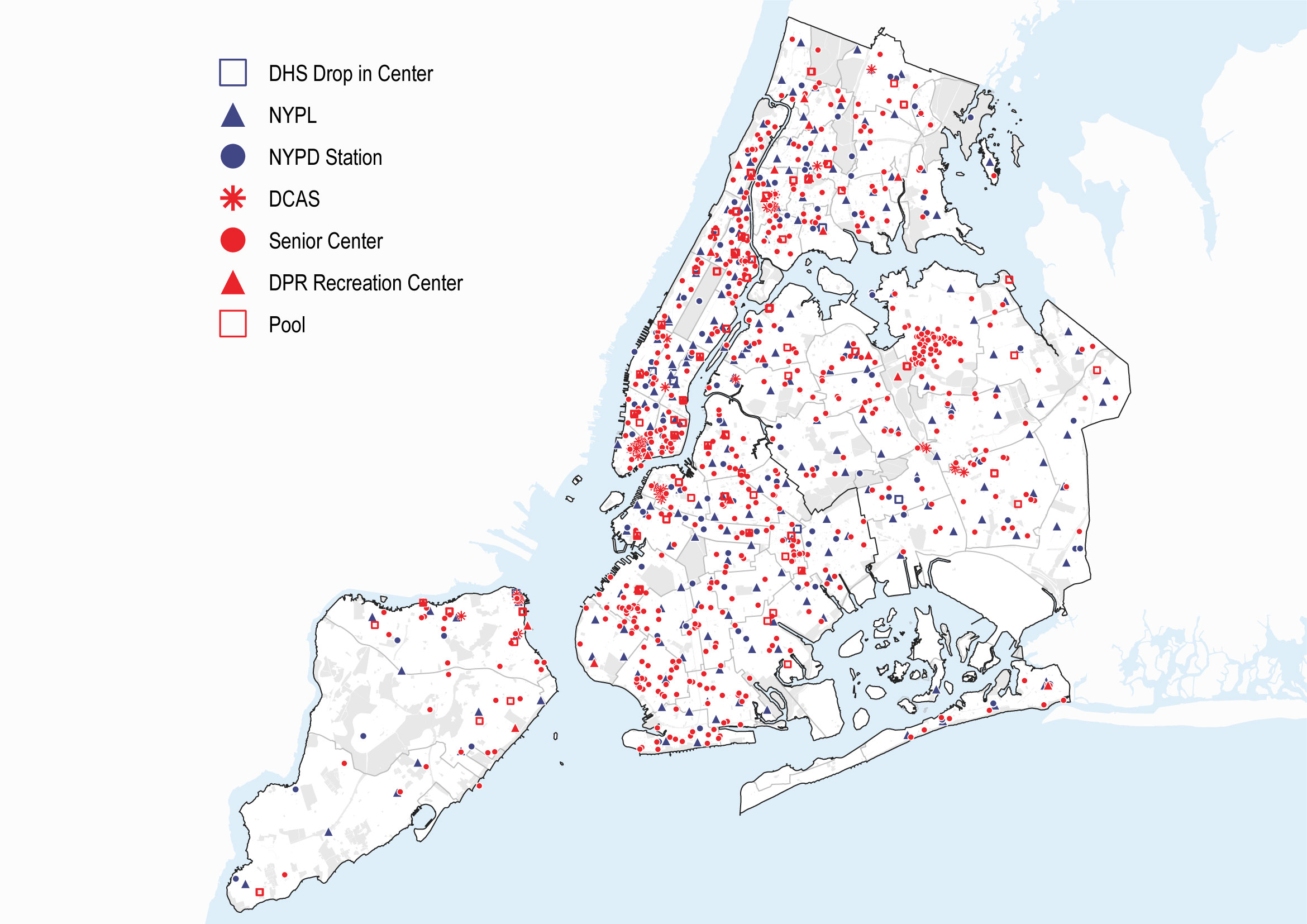
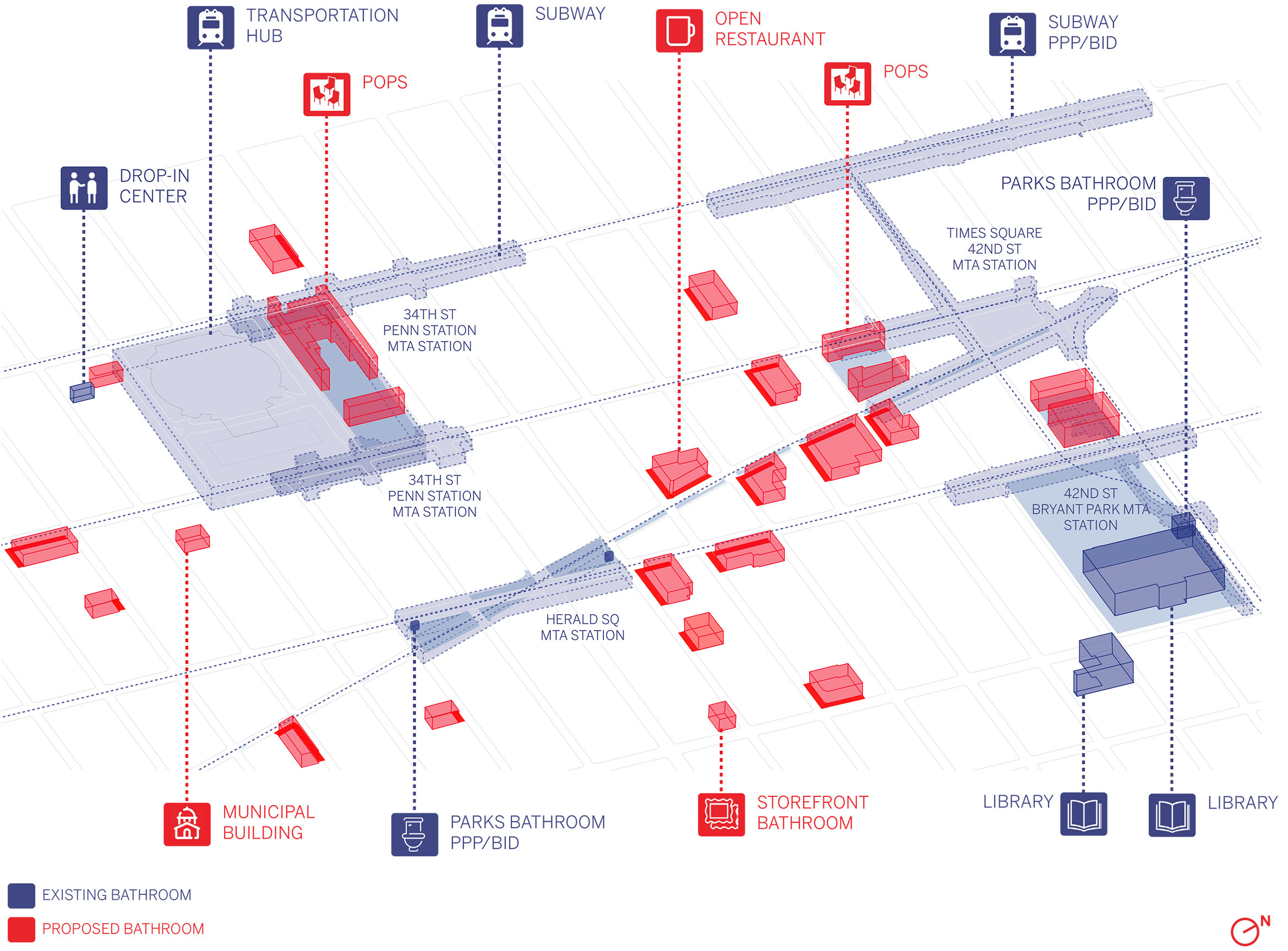
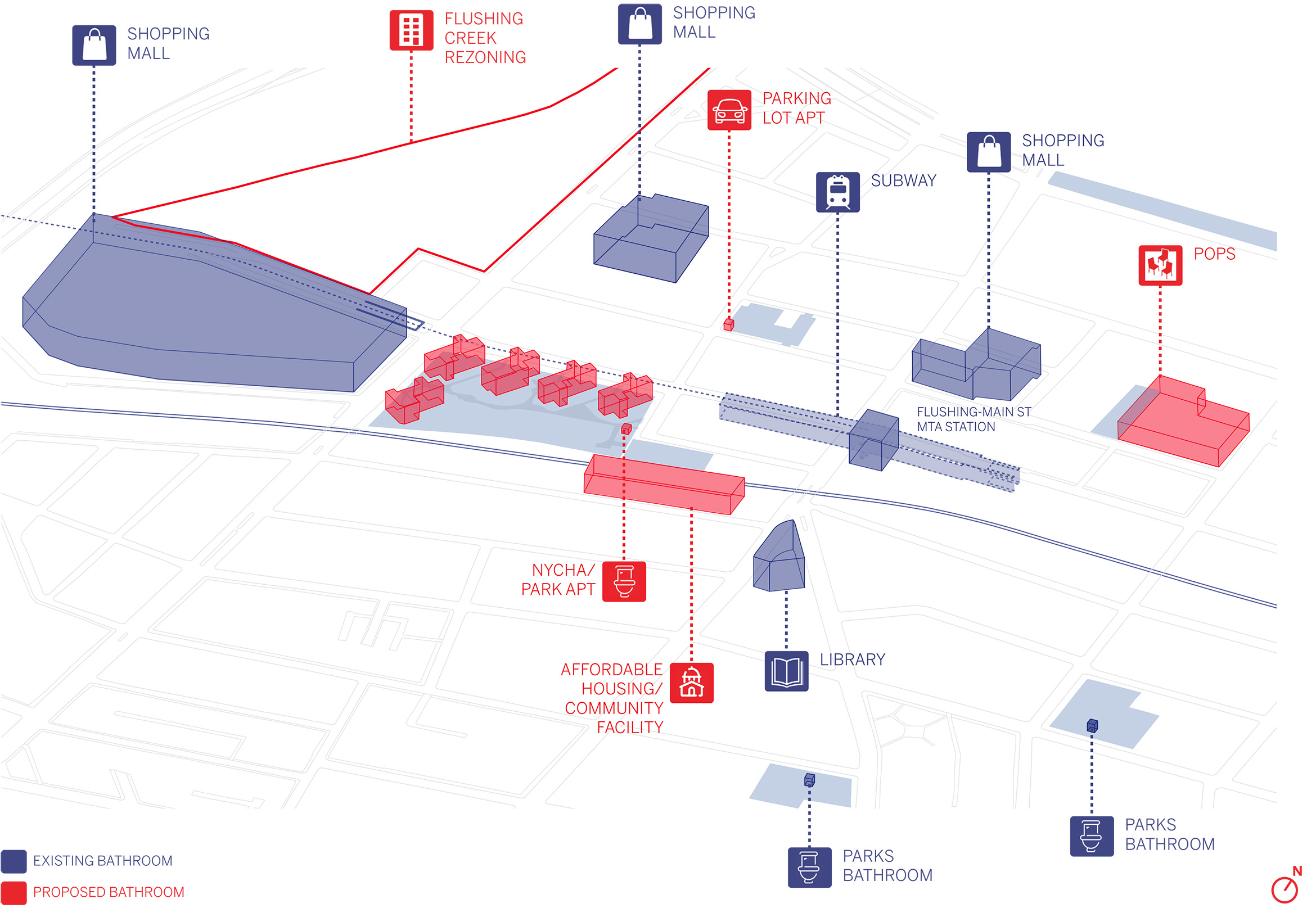
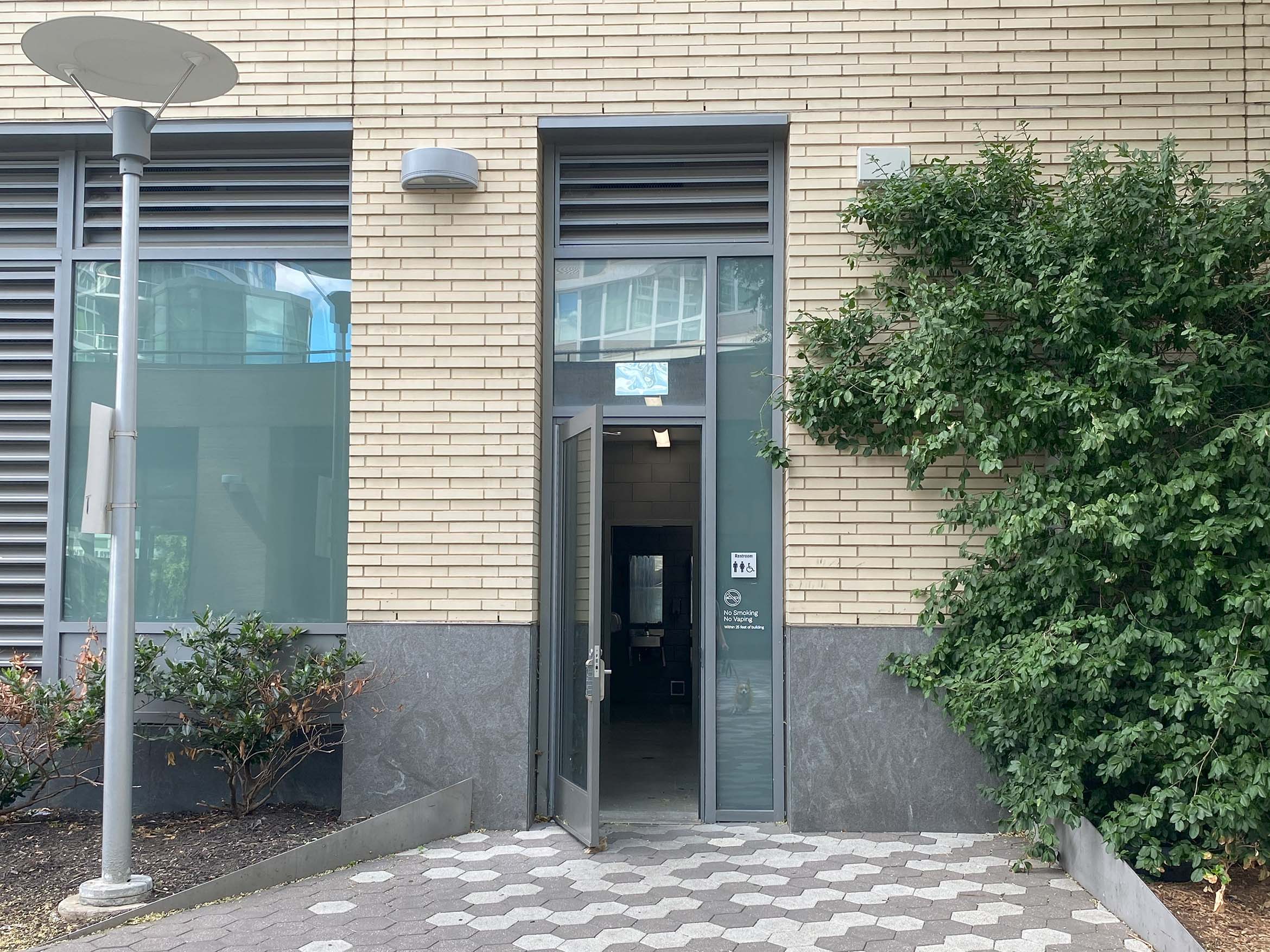
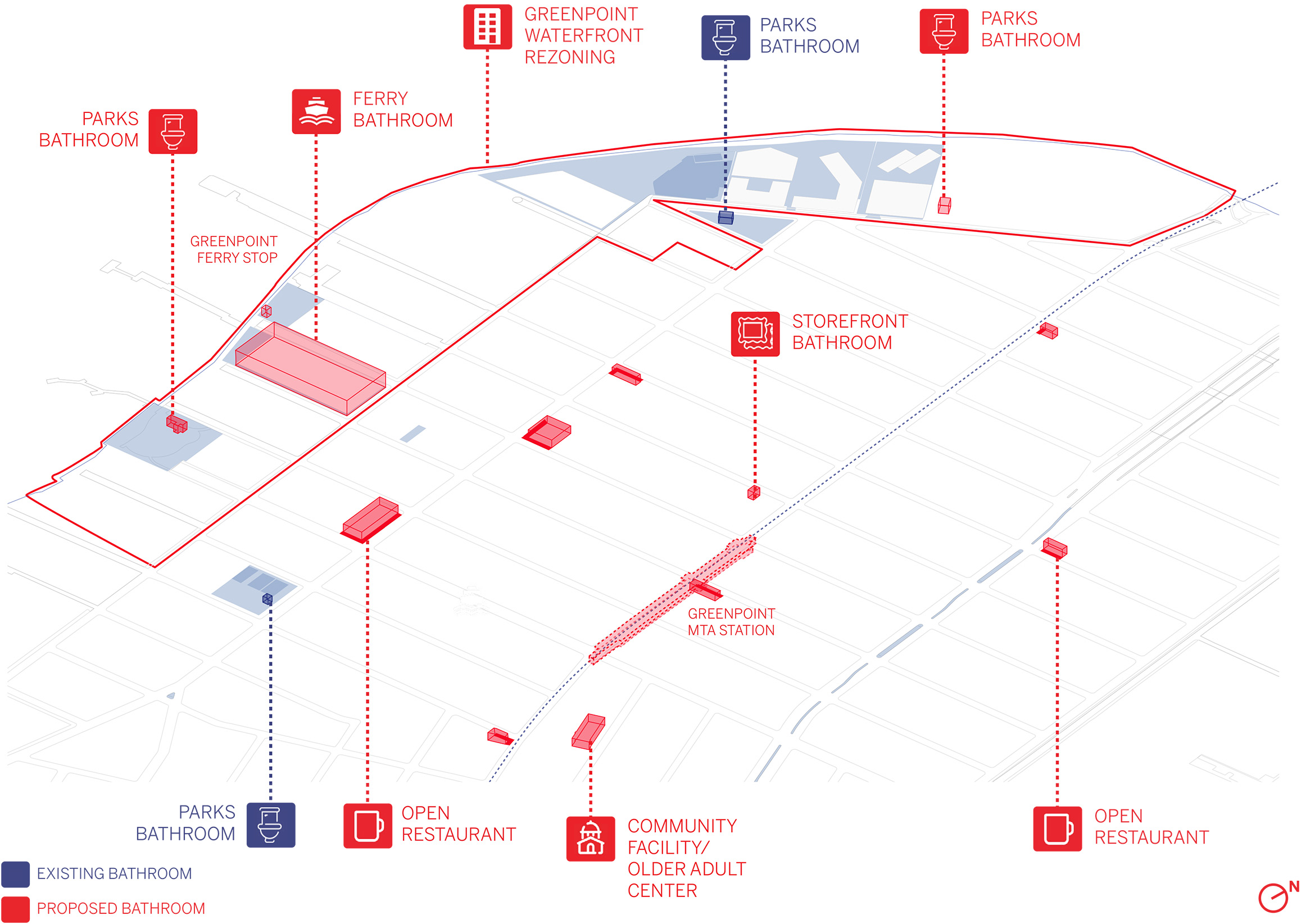
Comments